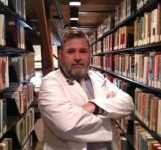Every year Sept. 15-Oct. 15 is recognized as National Hispanic Heritage Month in the United States. According to the United States Census Bureau, there are 58.9 million individuals of Hispanic heritage, making this group the largest minority group at 18.1 percent of the U.S. population.1 The data set, part of the department’s National Hispanic Heritage Month fact sheet, indicates a 10-state block with more than 1 million individuals of Hispanic heritage. This does not include the more than 3 million Americans living in Puerto Rico. “Hispanic” is further defined as persons who trace their families’ origins to the Spanish-speaking regions of Central America, South America, the Caribbean, Mexico, and Spain. In contrast, “Latinx” (the gender neutral denotation for Latin American) is a term reserved for people whose family origins are in the Western hemisphere and south of the United States.
Chiropractic in States with Large Hispanic Populations
The 10 states with more than 1 million Hispanic individuals are Arizona, California, Colorado, Florida, Georgia, Illinois, New Jersey, New Mexico, New York, and Texas. It was estimated in 2017 that 72 percent of these 58.9 million individuals speak Spanish and English while 29.8 percent of Hispanic persons speak English “less than well.”2 Several doctor of chiropractic training programs are clustered in this region, with 11 of 18 accredited programs located in these states.3 The Keiser University program, which is in the process of being accredited, is located in Florida, as well. The Federation of Chiropractic Licensing Boards (FCLB) reports 96,152 active chiropractic licenses in the United States with 48,186, or 50.1 percent, of these licenses in that 10-state block.4
National Chiropractic Health Month
This year, the ACA Commission on Diversity collaborated with the ACA Communications Department to better reach the Hispanic community by developing translated social media materials for National Chiropractic Health Month (you can access them in the NCHM campaign toolkit online). The Gallup-Palmer College of Chiropractic Inaugural Report: Americans’ Perception of Chiropractic demonstrates 48 percent of white Americans and 47 percent of Hispanic Americans have never seen a chiropractor.5 This indicates that there is a large group of Hispanic people we have not yet seen in our practices and our organization has not attempted to engage for NCHM before now. We hope to expand ACA’s public information efforts during NCHM through this translation project.
Thank you to Alejandra Estrin Dashe, PhD, Ana Canelo, DC, and Lily Baldazo, student at University of Western States College of Chiropractic, for their help in providing translations and editing. Special thanks is also in order for my friend Carmen Burgos, Caguas, PR, who is also a chiropractic patient.
More Language Projects in Development
The Commission on Diversity is developing additional projects (educational and promotional materials for member use and distribution) to facilitate broader access to information about ACA and chiropractic. FCLB lists a chiropractor to population ratio of 1:19,925, with 187 licenses for more than 3 million people in Puerto Rico.6 We have only four chiropractic doctors in Puerto Rico with profiles listed in the Find Your ACA Doctor search tool. We have the capacity to reach more people both in Puerto Rico and the U.S. federal republic if we are willing to do some work on language matters.
I have set up a brief three-question survey for ACA members to share their own linguistic diversity, with an option to connect with the Diversity Commission on future projects. If you would like to participate, the survey can be found online by clicking here.
Our committee has committed to inviting ACA members to contribute and shape the nature of our work. Please consider joining us in the process. We look forward to strengthening ACA members’ capacity to serve increasingly diverse individuals and families in their communities.
Dr. Foshee serves as the chair of the ACA Commission on Diversity and a member of the NextGenACA committee. He practices in Vermont, where he represents his district as the alternate delegate to ACA. Dr. Foshee is an April 2017 graduate of the Northwestern Health Sciences University. There he was honored as a Diversity Leadership Scholar for his commitment to underserved population health. He was also named a Philanthropy Fund Foundation Scholar in recognition of his leadership and service to the LGBTQIA community.
References
- Available at: https://www.census.gov/newsroom/facts-for-features/2018/hispanic-heritage-month.html. Accessed September 23, 2018.
- Available at: https://factfinder.census.gov/bkmk/table/1.0/en/ACS/16_1YR/S0201//popgroup~-06|-09|001. Accessed September 23, 2018.
- Available at: https://www.acatoday.org/About/Related-Organizations/Chiropractic-Colleges. September 23, 2018.
- Available at: http://directory.fclb.org/Statistics/LicensureStatisticsUS.aspx. Accessed September 23, 2018.
- Available at: http://www.palmer.edu/uploadedFiles/Pages/Alumni/gallup-report-palmer-college. Accessed September 23, 2018.
- Available at: http://directory.fclb.org/Statistics/RatioofLicensestoPopulation,US.aspx. Accessed September 23, 2018.
